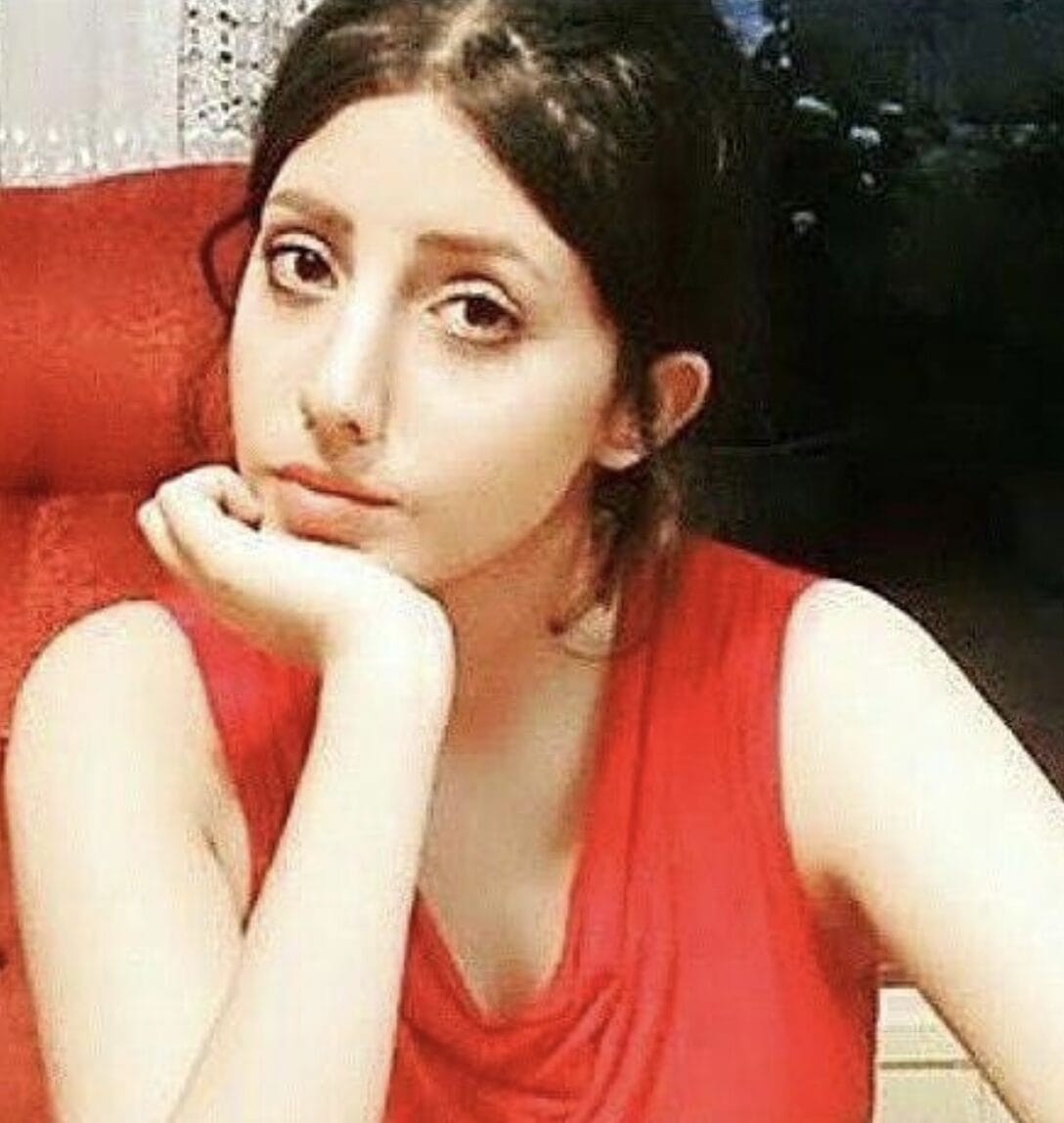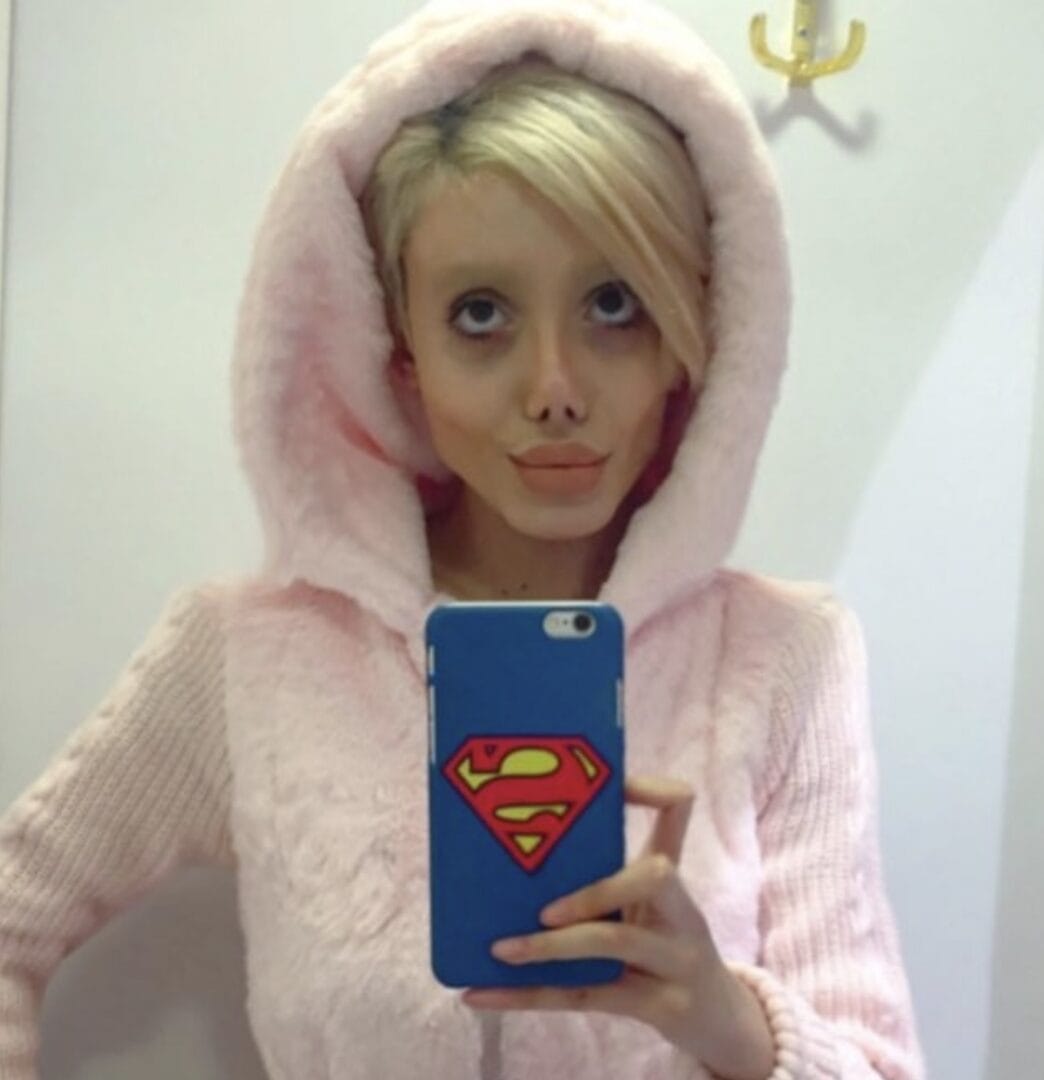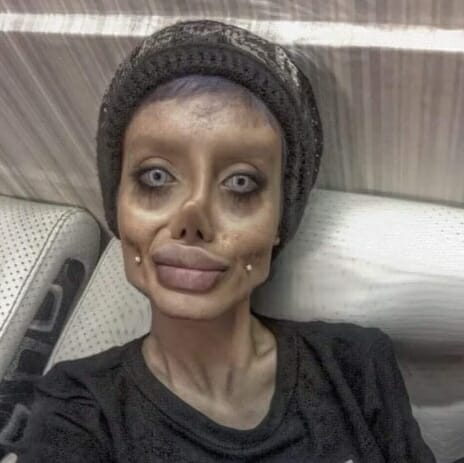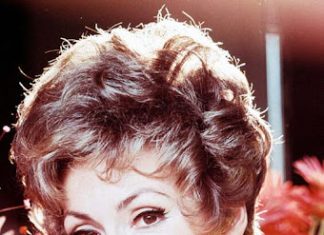The Transformation of Sahar Tabar: A Journey Beyond Aesthetic Dreams
Sahar Tabar, an Iranian influencer, has captured global attention through her dramatic transformation, which raises questions about beauty standards, identity, and the consequences of fame.

Hailing from Tehran, Sahar, whose real name is Fatemah Khishvand, became an internet sensation in 2017 when she shared striking images of herself that appeared to be heavily edited and altered through cosmetic procedures. The photos, which bore an uncanny resemblance to Hollywood star Angelina Jolie, sent shockwaves across social media platforms, attracting a following of over 400,000 fans on Instagram. This remarkable rise to fame was fueled by her unique, almost surreal aesthetic, which played into the digital culture of extreme beauty standards that often dominate contemporary social media.

The Surge of Fame and Controversy
Reports suggest that Sahar underwent more than 50 surgical procedures and lost nearly 90 pounds in pursuit of her aspirational appearance. As her online following grew, so did the scrutiny surrounding her motives and the implications of her transformation. Many speculated that her goal was to emulate Jolie, but Sahar later clarified that her intention was not to resemble any specific individual, insisting, “I am my own muse.” This assertion highlights a critical aspect of her narrative: the desire for self-creation versus the pressure of societal expectations.

Despite the rampant speculation, the artistic nature of her photos sparked discussions on identity and self-expression. Sahar described her creations as an exploration of art through makeup and digital manipulation, stating, “I love to play with makeup and photo editing.” This perspective offers a nuanced view of the often rigid constructs of beauty prevalent in society. It prompts a deeper inquiry into how digital media can both liberate and constrain the artistic expressions of individuals, especially those seeking validation in a world laden with visual stimuli.
The Cultural Context of Plastic Surgery in Iran
Iran is known for having one of the highest rates of cosmetic surgery in the world, particularly rhinoplasty or nose jobs. With a cultural acceptance of these procedures among Iranian youth, aesthetic transformation has become a common pursuit. In a society where beauty is often equated with success, many individuals, including Sahar, are driven by the desire for fame and acceptance. Yet, this pursuit of beauty can overshadow the emotional and societal implications of such drastic changes, leading to a complex relationship between self-image and social approval.
Sahar, despite facing opposition from her mother regarding her cosmetic choices, continued to document her journey online. She stated, “I don’t see anything bad in this. It’s simple, and many people around the world do it.” This sentiment reflects a broader societal trend where the quest for beauty is often met with mixed reactions, ranging from support to criticism. In this context, her actions represent a form of rebellion against traditional norms, challenging what it means to be beautiful in a rapidly evolving cultural landscape.
The Dark Turn: Arrest and Imprisonment
However, Sahar’s rise to fame was not without significant consequences. In October 2019, her controversial online persona caught the attention of Iranian authorities, leading to her arrest. She was charged with “corruption” and “blasphemy,” adding another layer of complexity to her narrative. Her Instagram account was suspended, and she faced a 10-year prison sentence that echoed the broader issues of censorship and artistic expression in Iran. Her case underscored not only the personal fallout of her choices but also highlighted the stringent societal controls imposed on self-expression and the creative freedom of individuals in the region.
The outcry surrounding her arrest garnered international attention, particularly from human rights activists. Masih Alinejad, a prominent Iranian activist, publicly called for support, stating, “Sahar Tabar is only 19. Her joke landed her in jail. Dear Angelina Jolie, we need your voice here. Help us.” This plea highlighted the dual narrative of a young woman caught in the throes of her artistic expression and the oppressive socio-political environment in which she operates. The global response to Sahar’s situation reflects a growing awareness of the intersection between art, identity, and personal freedom in oppressive regimes.
Release and Reflection
Surprisingly, after just 14 months, Sahar was released from prison, coinciding with a period of heightened protests in Iran. This unexpected development raised questions about the motivations behind her release. According to Sahar, the judge agreed to convert her arrest order to a bail order, suggesting a potential shift in the judicial approach toward cases like hers amidst societal turmoil. Her release not only marked a personal milestone but also ignited conversations about the changing landscape of artistic expression and societal norms in Iran.
Post-release, Sahar made public appearances and revealed that many of her viral images were a result of heavy makeup and digital editing rather than solely cosmetic surgery. This revelation shifted the narrative from one solely focused on physical transformation to a broader discussion about societal pressures and the lengths individuals go to in pursuit of acceptance. Sahar articulated her experiences in a way that resonates with many: “Behind every transformation, there is a story, a longing for acceptance.”
A Broader Discussion on Beauty and Identity
Sahar Tabar’s journey is emblematic of a larger societal discourse surrounding beauty, identity, and the quest for approval in an increasingly digital world. In her own words, she stated, “I’m not one to judge others. People are free to be who they want to be and look however they want to be.” This statement encapsulates a key takeaway from her experience: the importance of self-acceptance amidst societal expectation. Her perspective encourages a dialogue about the nature of beauty, suggesting that self-worth should not be contingent upon conforming to external beauty standards.
Ultimately, Sahar’s story illustrates the intricate interplay between personal identity and public perception. It serves as a reminder that behind the layers of makeup and digital enhancements lies a complex human experience, one that deserves recognition and empathy rather than mere judgment. As society continues to grapple with rapidly changing standards of beauty, it becomes imperative to foster environments where individuality and authenticity can thrive without fear of retribution or criticism.
As Sahar continues to navigate her newfound freedom, her journey invites us to reflect on the nature of beauty and the societal forces that shape our perceptions of it. In a world where the lines between reality and digital creation blur, the narratives we construct around individuals like Sahar offer profound insights into the human spirit and the constant quest for self-expression. Her experience reminds us that every story of transformation is not merely about the surface but is intertwined with deeper truths about societal pressures, personal desires, and the relentless pursuit of authenticity in an age defined by image.
“`















